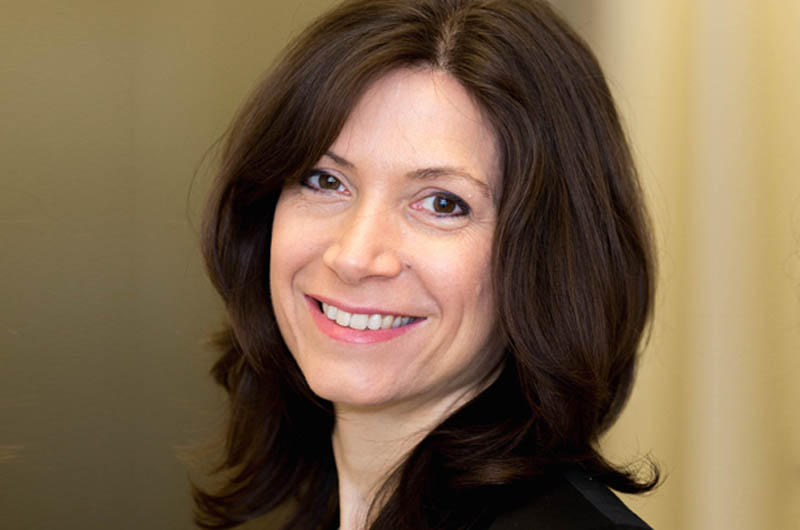Choosing Wisely and Wait Times
Aug 23, 2017 - Viewpoints
by Dr. Kimberly Wintemute for Canadian Family Physician
Blog featured in Canadian Family Physician by Dr. Kimberly Wintemute on how unnecessary tests can lead to longer wait times.
Choosing Wisely and Wait Times
Aug 23, 2017 - Viewpoints
by Dr. Kimberly Wintemute for Canadian Family Physician
Blog featured in Canadian Family Physician by Dr. Kimberly Wintemute on how unnecessary tests can lead to longer wait times.

In 2015, my stepdad had upper abdominal pain. It wouldn’t let up. My mom took him to the local hospital in their Vancouver suburb.
His case was unusual: he had a splenic infarct. His ECG showed atrial fibrillation. It was suspected that his left atrium was the embolic source. He was sent home from emerg on anticoagulants and rate control.
He was scheduled to see a cardiologist. But first, he needed an echo, for which there was a six-week wait.
“Six weeks?” I was in disbelief. I work at a community-based teaching hospital in Toronto, where an echo would be done within days. My parents do not live in an under-serviced area, so – what gives?
As I thought about it more, my disbelief turned to anger. I have been aware that there is a problem with unnecessary echoes, where people who don’t need them are getting them. Scheduling patients for unnecessary echoes means longer wait times for those who really need them.
I appreciate that the wait time issue is not simple. There can be system factors, like shortages of health care providers, O.R. time, hospital beds or manufacturers’ supplies. But the ordering of unnecessary tests or procedures is one that is within our control to change, as health care providers.
Why would anyone order unnecessary tests? Any medical professional can get into habitual ordering patterns, whether it’s a family doctor who orders a yearly “panel” of blood work or a cardiologist who orders an echo on every patient they see. These kinds of ordering routines do not take into account the unique features of any particular patient, so many patients will be tested unnecessarily. “Automatic” ordering seems efficient for the running of a practice, but it is not so efficient in other ways. Patients must take time away from work or other activities to get these tests done. And the health care system suffers high demand, leading to long wait times for the tests some people genuinely need.
The lure of technology is also tempting. Some patients feel gratified when they have had high-tech tests – it is 2017, isn’t it? Surely technology adds a lot to the diagnosis and treatment plan – right?
Not always – and in fact, not most of the time. A 25 year-old study1 still rings true with an observation that has been reproduced many times. In 76% of cases, we make a diagnosis based on history alone. In 12% of cases, we make a diagnosis after the addition of a physical exam. And in only 11% of cases, a test is needed to figure out the diagnosis.
What is heartening (pun intended) in the field of cardiology is that some regions are developing systems to ensure that tests like echo are being done for the right reasons. In Ontario, clinicians and organizations that provide echo services now require “certification” by the Cardiac Care Network. This group’s mandate is to ensure cardiac testing sites are practicing according to best available evidence. When a patient is booked for an echo, there must be a reason for the test that is known to affect the outcome of their care. This could help shorten echo wait times for some communities.
The Choosing Wisely Canada (CWC) campaign is also encouraging richer conversations between clinicians and patients, with the goal of reducing unnecessary medical care. The CWC website provides lists of recommendations for tests, treatments and procedures that are commonly done but are not evidence-based and that may cause more harm than good. The campaign has also developed four key questions that patients can ask their doctors, in order to start meaningful conversations:
Do I really need this test, treatment or procedure?
What are the downsides?
Are there safer, simpler options?
What happens if I do nothing?
These questions are available in poster or tent card format from the CWC office (info@choosingwiselycanada.org). They can be displayed in family medicine offices.
So, how can we, as clinicians, have an impact on wait times? In our ordering, let’s consider whether each test will lead to an important health care decision. If no decision depends on the test result, then the test does not add value – and is likely unnecessary.
Thankfully, my stepdad is doing fine, despite the anxiety of the long wait for his echo. He still takes his medications. He and my mom do lots of travelling. And he still makes my day by sending me corny jokes by email.
Reference:
- Peterson MC, Holbrook JH, Von Hales D, Smith NL, Staker LV. Contributions of the history, physical examination, and laboratory investigation in making medical diagnoses. West J Med. 1992;156(2):1635. https://www.ncbi.nlm.nih.gov/pubmed/1536065
This article originally appeared in Canadian Family Physician.
